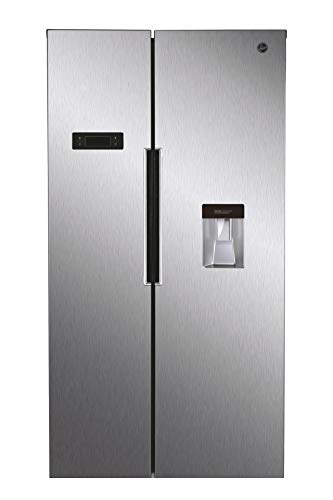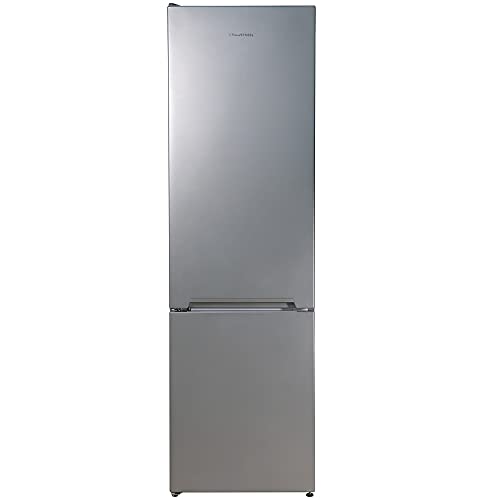
1
JuliThe Best Fridges And Freezers Tricks To Rewrite Your Life

Understanding Fridges and Freezers: The Essential Kitchen Appliances
Refrigerators and freezers are 2 of the most important devices in contemporary kitchens. These devices serve an important function in food preservation and waste reduction by ensuring that disposable items remain fresh and safe for intake. This short article explores the different kinds of fridges and freezers, their functionalities, and essential factors to consider for choice and maintenance.

Types of Refrigerators
The market provides a range of refrigerator types, each created to fulfill various consumer needs. Below is a list of the most common kinds of Best fridges:
Top-Freezer Refrigerators
- Most common type.
- Freezer compartment lies above the refrigerator section.
- Typically more budget friendly and energy-efficient.
Bottom-Freezer Refrigerators
- Freezer is situated at the bottom.
- Enables much easier access to fresh items at eye level.
- Often features pull-out drawers for much better organization.
Side-by-Side Refrigerators
- Refrigerator and freezer sections are surrounding.
- Suitable for narrow kitchen areas and enables easy access to both compartments.
- Frequently features water and ice dispensers.
French Door Refrigerators
- Integrates a bottom freezer with double doors at the top.
- Deals sufficient storage and stylish designs.
- Often includes features like temperature-controlled drawers.
Compact Refrigerators
- Smaller size suitable for restricted spaces.
- Frequently utilized in dormitory, small homes, or as secondary fridges.
Table 1: Comparison of Refrigerator Types
| Type | Advantages | Disadvantages | Typical Size |
|---|---|---|---|
| Top-Freezer | Budget-friendly, energy-efficient | Less hassle-free access to the freezer | 14-30 cu. ft. |
| Bottom-Freezer | Simpler access to fresh food | Freezer can be harder to arrange | 19-30 cu. ft. |
| Side-by-Side | Easy gain access to, water/ice dispenser | Narrow vs. storage space | 22-30 cu. ft. |
| French Door | Elegant, spacious, organized | More pricey | 20-30+ cu. ft. |
| Compact | Space-saving, portable | Limited storage | 1.7-5.5 cu. ft. |
Types of Freezers
Freezers are an equally essential home appliance for food conservation. They come in various styles designed to fit different family requirements. Think about the following types:
Upright Freezers
- Operate like a basic refrigerator with vertical storage.
- Easier to arrange with shelves and compartments.
Chest Freezers
- Large, horizontal style usually providing more storage space.
- Maintains temperatures better during power interruptions.
- More energy-efficient than upright models.
Portable Freezers
- Compact units ideal for outdoor activities or small spaces.
- Often utilized for camping trips or as temporary storage.
Table 2: Comparison of Freezer Types
| Type | Advantages | Downsides | Normal Size |
|---|---|---|---|
| Upright Freezer | Simpler to organize | Less energy-efficient, more floor space | 5-20 cu. ft. |
| Chest Freezer | Holds more items, energy-efficient | Harder to arrange | 5-25 cu. ft. |
| Portable Freezer | Compact and flexible | Limited storage capability | 1-10 cu. ft. |
Key Features to Consider
When selecting a fridge or freezer, consumers must keep in mind several functions that can boost performance:
- Energy Efficiency: Look for models with the ENERGY STAR certification to minimize electricity bills.
- Storage Capacity: Evaluate storage needs based upon family size and eating habits.
- Temperature level Control: Some appliances provide digital controls for precise temperature settings.
- Adjustable Shelving: Customizable shelving enables for optimum organization.
- Water and Ice Dispenser: Offers convenience but can take up valuable space inside.
- Sound Level: Sound scores can influence comfort, particularly in open-concept homes.
Pros and Cons of Having a Fridge and Freezer
While fridges and freezers are important technologies, they also have specific advantages and disadvantages:
| Pros | Cons |
|---|---|
| Maintain food lifespan and lower waste | Require routine upkeep |
| Enable bulk buying and meal prepping | Can be costly to buy and run |
| Deal convenience and quick access to food | Occupy considerable kitchen area |
Maintenance Tips
To guarantee longevity and ideal efficiency of fridges and freezers, consider the following upkeep suggestions:
- Regular Cleaning: Clean the exterior and interior occasionally to avoid buildup of dirt and bacteria.
- Check Seals: Inspect door seals routinely for leaks to keep performance.
- Temperature Settings: Keep the fridge at 34-38 ° F and the freezer at 0 ° F for optimal food conservation.
- Defrost as Needed: Chest freezers ought to be thawed frequently to keep performance.
- Clear Air Vents: Ensure that airflow isn't blocked to enhance energy performance.
FAQs About Fridges and Freezers
Q1: How long can food be kept in a freezer?A: Most foods can be kept in a freezer for a number of months. Meats and poultry often last 4-12 months, while veggies can last up to 8-12 months.
Q2: How typically must I clean my fridge and freezer?A: It is recommended to clean your fridge and freezer every 3 to 6 months, or as required when spills take place. Q3: Can I put hot food straight in the fridge?A: It is advised to cool hot food to space temperature before placing it in the fridge to avoid
raising the temperature inside the device. Q4: Why is my fridge running constantly?A: This might be due to a malfunctioning thermostat, clogged coils, or door seals that aren't working correctly. Fridges and freezers are vital
assets to modern households, providing necessary services for food storage and conservation.
Understanding the numerous types, features, and upkeep requirements can assist customers select the right appliances for their requirements and maximize their performance. Accepting energy-efficient designs not just supports sustainable practices but also adds to significant savings on energy expenses, making informed choices more vital than ever.

Reviews